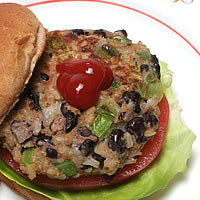It's not always easy to do, but you can start with focusing on fiber-rich, low-calorie plant foods like vegetables, fruits and whole grains.
Make a goal to include these at every meal and the fiber begins to add up.

Aim to eat five servings (2- 3 cups) of vegetables and fruits plus three servings of whole grains and you'll be on your way to the recommended amount of fiber - close to 21 grams.
According to the American Diabetes Association, people with diabetes should consume at least the recommended amount of fiber for the general population: about 25 grams per day for women and 38 grams per day for men.
You get closer to that target with each added step to boost fiber. Include protein and fiber packed pulses (dried beans and peas) and a few nuts and seeds, and you'll add at least 8-10 grams fiber daily.
Work your way up to 7 to 10 servings of vegetables and fruits daily, and gradually replace refined grains with whole grains. You can also choose a cereal with 5 or more grams of dietary fiber per serving for breakfast or as a snack.
Add dried beans (like kidney beans, garbanzo beans, and lentils) to salads or soups.

As a matter of fact, a new study suggests that eating just one serving a day of beans, peas, chickpeas or lentils could contribute to modest weight loss (Study: Permanent Weight Loss with Beans, Peas, Chickpeas or Lentils).
Also make a habit of snacking on a handful of nuts instead of low-fiber chips or crackers.
Add fiber supplements if necessary to reach the level your doctor recommends, but then try gradually increasing high fiber foods and decreasing fiber supplements. By adding high fiber foods you also get many valuable nutrients and health-protective nutrients that a fiber supplement can't provide.
Research now shows that different types of fiber provide different health-related benefits. By getting fiber from a variety of plant foods, you'll get a full complement of fiber types.











